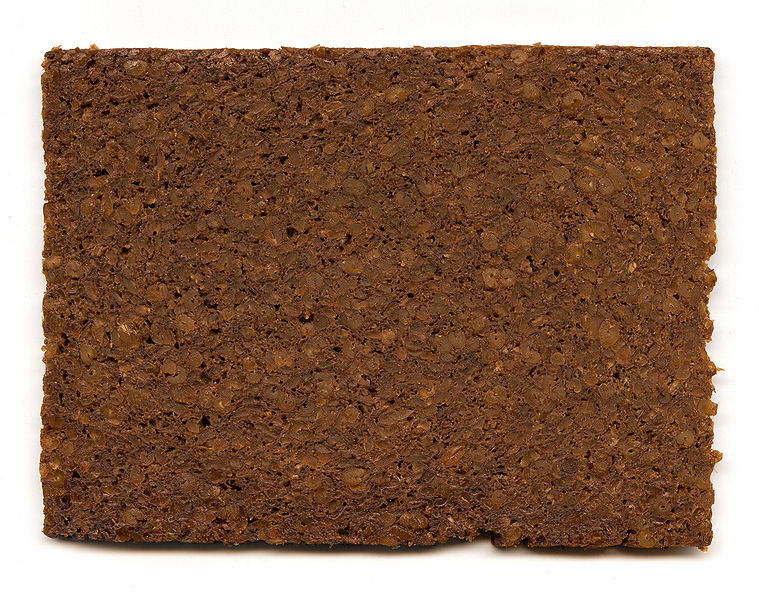Pumpernickel bread in America means something different to everyone. To me, it was my childhood bane-the bagel that was DEFINITELY NOT CHOCOLATE. To someone with more sophisticated taste, it is a dark dark rye bread with a slightly sweet taste. But to many Americans, it is the dark bread in a plastic bag with food coloring, and extra goodies like coffee, cocoa powder and molasses for palatability.
Originally from Germany, traditional pumpernickel is a 100% rye bread, and is baked for up to 24 hours in a steam oven at a very low temperature. This long bake gives the bread its characteristic coloring. The low gluten content of rye is responsible for the bread's density. The digestibility of the bread is questionable, hence the name, which translates to "devil's farts."
Bread SRSLY pumpernickel uses no rye, but does use a traditional long fermentation process. The dough is flavored with caraway and coriander seeds, and colored with freshly milled teff, an Ethiopian grain. The flavor is what I recall from my first bite into a pumpernickel bagel as a kid. While I couldn't stand the stuff, it became one of my favorites when I was a teenager. Expect a slightly drier loaf, with a tangy flavor and a strong fragrance of old world bread.
Friday, February 22, 2013
Sunday, January 27, 2013
Citrus
To me, nothing feels like home more than a bowl filled with fruit. Back in New York, our fruit bowl contained whatever we craved - apples, mango, kiwifruit, plums - whenever we craved it. But living so close to so many fruit growers has taught me about the many wonders of eating locally, and in season.
Peel a satsuma straight from the farmer's market and you'll find it both sweeter and more tart than any from the grocery store. The meyer lemons are fragrant even from a distance, and the many types of oranges available at the stands are all heavy with juice.
Try them all. Cara cara oranges from Lone Oak Ranch, page mandarins from Tory Farms, temple oranges from Flying Disc Ranch, oro blanco from Ferry Farms, satsumas from Everything Under the Sun, buddha's hand and etrog from Hamada Farms...
Simple Marmalade
Citrus and its peel are both full of natural pectin, the ingredient that causes jams to gel. Boil your lemons, limes and oranges with your sweetener of choice in a bit of water, and keep cooking and tasting for a few hours.
Process in jars, or refrigerate containers of it. Once the jam has cooled, it should have gelled nicely. (If not, try again with less water, or continue to cook it. Gel or no, it will be delicious!)
Try it with a bowl of plain yogurt, or spread on sourdough toast. Meyer lemon marmalade is my favorite sandwich spread, and pairs well with savory fillings.
Candied Citrus Peel
Cut the peel of several pieces of citrus. Boil in water for a few minutes and drain. This will help alleviate the bitterness of the pith. Repeat as necessary. In the final boil, add your sweetener of choice to taste. A little salt might help bring out the sweetness without adding more sugar.
Continue to boil in the sweet water until all the water has evaporated. You should be left with a translucent pile of candied peel, slightly sticky to the touch. Let it dry and store it in an airtight container.
Candied citrus peel is delicious cut up in cookies, as a topping for a cake, cooked down with a savory entree as a sweet garnish, or straight from the jar.
Subscribe to:
Posts (Atom)


.JPG)